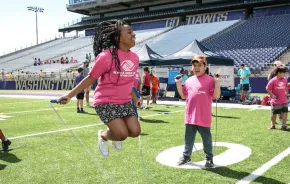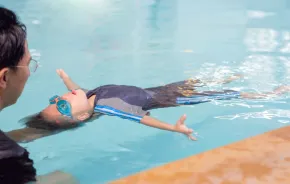
It was an ordinary Friday at the office when my phone rang and I answered to hear my daughter breathlessly telling me that the school admission letters had arrived in the mail.
“Should I open them?” she asked.
“Sure,” I said. I heard an envelope being torn open, then silence as my daughter read the letter.
“Oh, it’s a rejection,” she said with a little disappointment.
“Don’t worry, sweetie. You have four others to open,” I assured her.
She opened letter no. 2 and said, “They put me on the wait list.”
My heart skipped a beat. “Try the next one.”
Letter no. 3 also put her on a wait list. I could feel her anxiousness mounting over the phone lines. Letter no. 4 was another rejection. There was one letter left. She paused a moment. “Okay, this is it.” I held my breath. “Oh, mom, it’s another wait list … ” she said, her voice trailing off.
I was stunned. She had good grades and high scores on her entrance exam — how could this have happened? She started to cry.
My heart broke for her. College applications? No, this was middle school, and my 11-year-old daughter had just been initiated into the world of being judged not quite good enough.
Being waitlisted triggered our family’s journey down a life-changing path. We had already decided that our local public middle school would not be a good fit for our “twice-exceptional” daughter — due to the large class sizes and lack of resources for kids who are intellectually gifted but also struggling with ADHD. But coincidentally I had recently read a book by David Guterson called Family Matters describing his family’s decision to teach their own children, and it suddenly occurred to me homeschooling might be the opportunity we didn’t know we had been waiting for.
Guterson shattered my preconceptions about homeschooling. In fact, it was liberating to consider getting away from the peer pressure and exclusivity that private schools can engender, and the large classes and “teaching to the test” of public schools. Not having to pay private school tuition was also appealing, to say the least.
When people ask why we homeschooled, I tell them that being waitlisted for middle school was the “push,” but the chance to get a grip on the challenges of ADHD in a less pressured atmosphere was the “pull” that sealed the decision.
The “perfect storm” of middle school
College applications? No, this was middle school, and my 11-year-old daughter had just been initiated into the world of being judged not quite good enough.
Heightened academic expectations, a new school, and a different teacher for every class, plus mounting peer pressure and the self-consciousness of puberty, equals the “perfect storm” that is middle school. Add in ADHD and you have a recipe for disaster.
Although most kids struggle with the transition to middle school, kids with ADHD have a particularly difficult time. Focusing and organizing their time, materials, and ideas is a huge challenge. A half hour reading assignment stretches to 90 minutes as a student works three times as hard as others to focus. Creating a clear outline for a report takes hours as attention drifts. Bright kids with ADHD are sometimes doubly punished. Teachers who know what the student is capable of naturally wonder when some assignments don’t measure up. Many conclude the student is just lazy. Friction develops between the student and teacher, and the result is one very demoralized student.
Middle school is often the time when a kid with ADHD — regardless of intellectual capacity — begins to experience his or her first real failures, and school becomes just something to endure. Parenting experts advise us to let kids fail sometimes, since that is where much of the learning occurs anyway. But the risk of having our daughter shut down to learning in the midst of this perfect storm was one we weren’t willing to take.
By choosing to homeschool, we eliminated the chaos of a large school and multiple teachers right off the bat. My daughter is taught by me and a handful of tutors, one-on-one or in classes of no more than 10 students. By the end of sixth grade, our one-year experiment had proven itself and we happily continued for seventh and eighth grades. Since we set the schedule and assignments, we could slow down or speed up as dictated by her interests and abilities. Homeschooling helped my daughter stay intact emotionally and allowed her to keep making academic progress where she might otherwise have derailed in a traditional school setting.
The bottom line
Yes, there are experiences my daughter missed by being homeschooled — there are always trade-offs — but for us, it had a lot of plusses, not the least of which was a good fit with her ADHD. Don’t get me wrong: She still lost papers and forgot to do assignments. But the stakes were lower and there was no audience of peers watching her fail. People often think of homeschooling as a good fit for the early school years. That may be true, but I’m glad we made the leap to homeschooling for middle school when the opportunity presented itself.
Who could have imagined when the admission letters arrived, that what felt like the end of the world would end up being the beginning of a very special education for us both? In hindsight, rejection never felt so good.
Read part two of this four-part article: What About Socialization?











